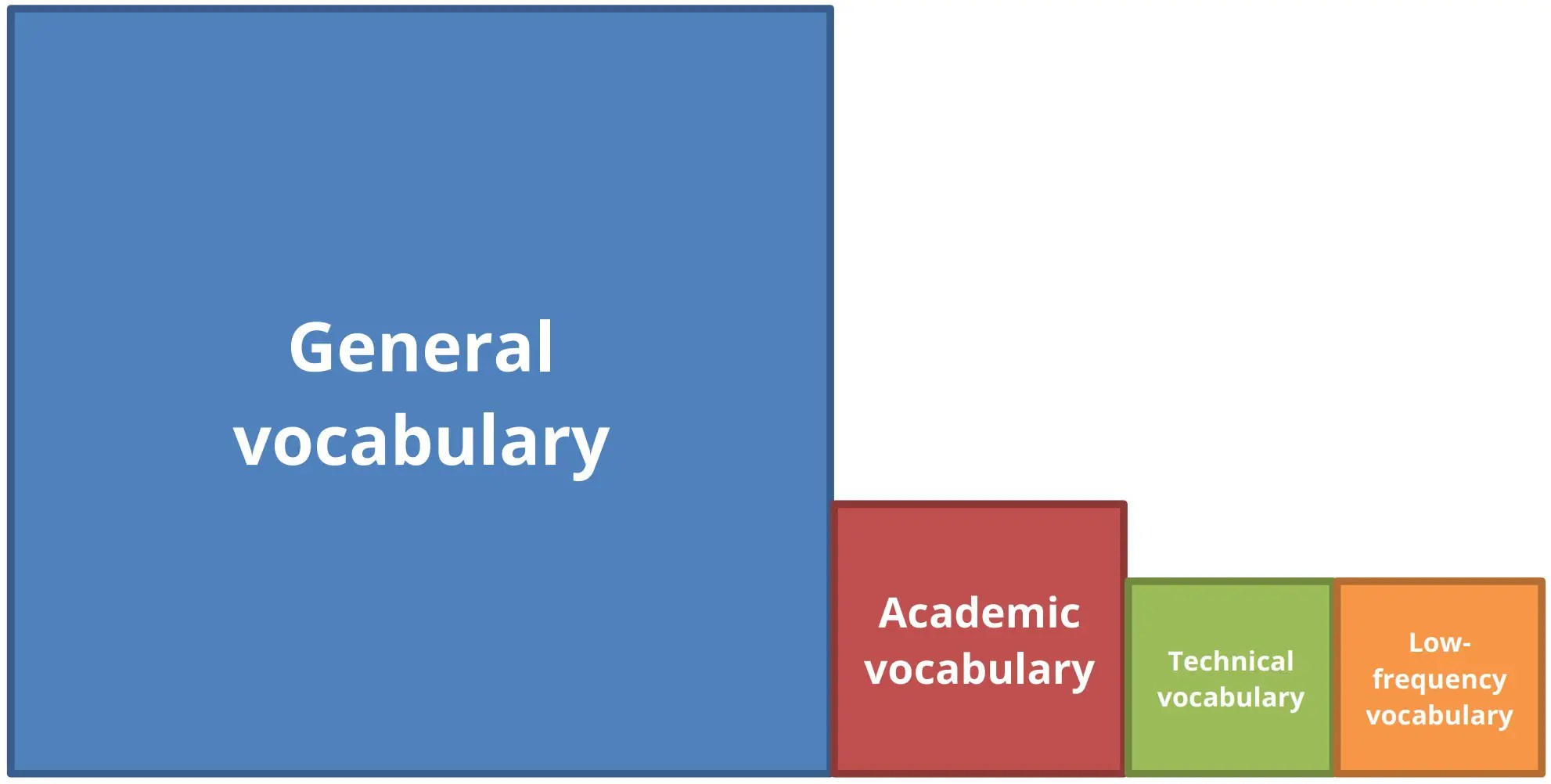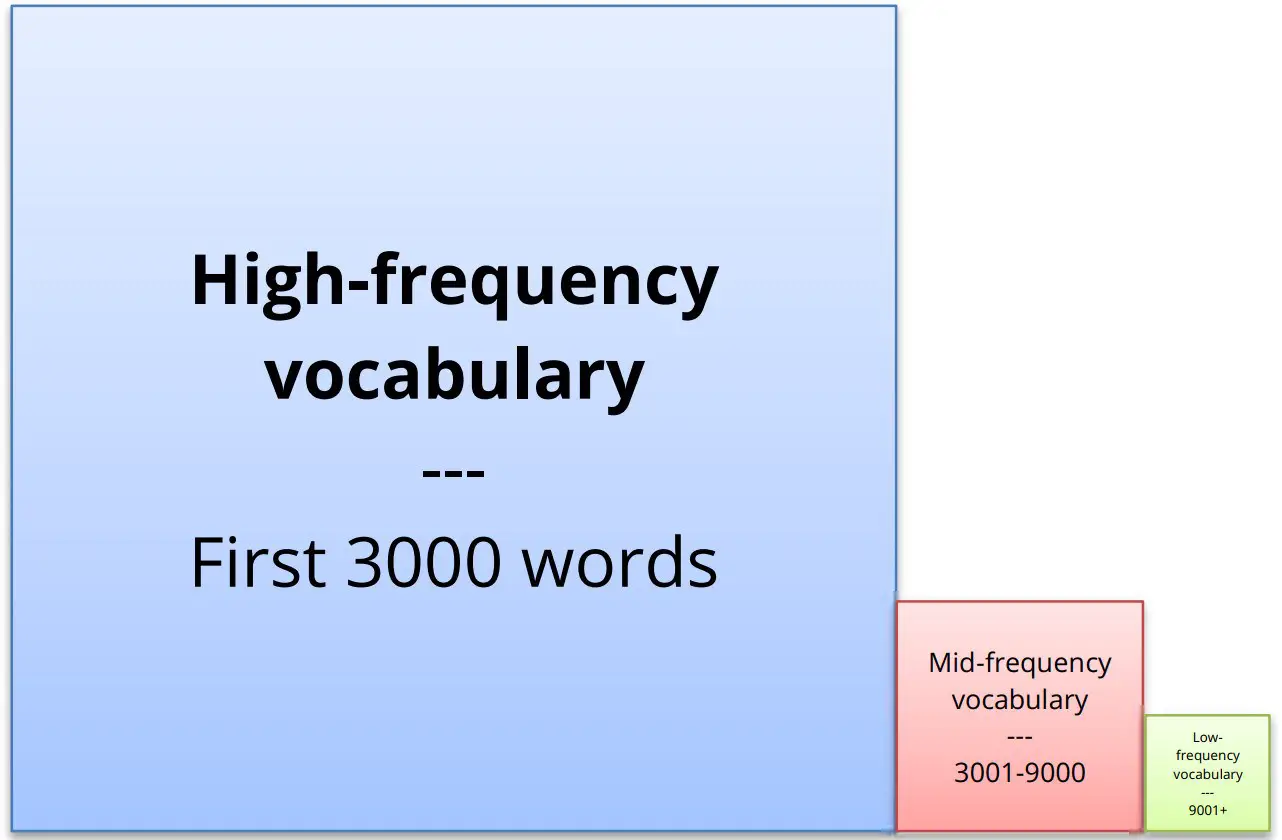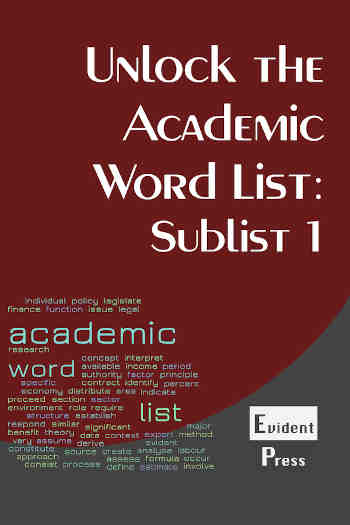Show AWL words on this page.
Show sorted lists of these words.


 







|
 Podcast is loading. Problems? Too slow? You can also access the Podcast by
clicking here.
Podcast is loading. Problems? Too slow? You can also access the Podcast by
clicking here.This message will disappear when then podcast has fully loaded.
This page discusses general vocabulary. It begins with a definition of general vocabulary, then considers how many words should comprise general vocabulary, looking at two common models of vocabulary: one by Nation (2001), and a more recent one by Schmitt and Schmitt (2014).
What is general vocabulary?
General vocabulary, also called high-frequency vocabulary, is vocabulary that occurs frequently in all kinds of texts and everyday language. It is likely to comprise the majority of the words and phrases learners encounter on a General English course at school.
General vocabulary accounts for the vast majority of the content of spoken and written English. For example, the 10 most frequent words in English account for around 25% of all words in writing and speaking, the 100 most frequent words account for 50%, the most frequent 1000 words account for around 70% of English use, and the most frequent 2000 words for around 80%.
To illustrate this, below are the first two sentences of the paragraph above, with different levels highlighted (the 10, 100 and 1000 most common words).
- General vocabulary, also called high-frequency vocabulary, is vocabulary that occurs frequently in all kinds of texts and everyday language. It accounts for the vast majority of the content of spoken and written English. -- 10 most common words [10/34]
- General vocabulary, also called high-frequency vocabulary, is vocabulary that occurs frequently in all kinds of texts and everyday language. It accounts for the vast majority of the content of spoken and written English. -- 100 most common words [14/34]
- General vocabulary, also called high-frequency vocabulary, is vocabulary that occurs frequently in all kinds of texts and everyday language. It accounts for the vast majority of the content of spoken and written English. -- 1000 most common words [25/34]
How many words are general vocabulary?
There is no precise figure of how many words should comprise general vocabulary. However, there are two models that categorise vocabulary which suggest an answer: one by Nation (2001), the other by Schmitt and Schmitt (2014).
General vs academic/technical/low-frequency vocabulary
A traditional way to categorise vocabulary (from Nation, 2001) has been as general (i.e. high-frequency) vocabulary, academic vocabulary, technical vocabulary, and low-frequency vocabulary. Using this categorisation, general vocabulary has typically been set at around 2000 word families. This is the number of word families in the original General Service List (GSL), which is the foundation for the Academic Word List (AWL), which remains the most commonly used list of academic words. While more recent general word lists appear to contain more words (the NGSL has 2801 words, the New-GSL has 2494 words), these are lemma-based lists, i.e. words and inflected forms, not word families. The NGSL has 2368 word families, while the New-GSL has 1883 word families, which are both close to the 2000 word family range.
High- vs mid- vs low-frequency vocabulary
A more recent way to categorise vocabulary (from Schmitt and Schmitt, 2014) is as high-frequency, mid-frequency, and low-frequency vocabulary. This categorisation expands the high-frequency range to the most frequent 3000 words, with mid-frequency words representing words from 3001 to 9000 frequency levels, and low-frequency representing words from 9001 and lower.
The level of 3000 was chosen based on various factors, including the range of vocabulary for graded readers (which typically finish around the 3000 word level), lists of defining vocabulary for learner dictionaries (which range from 2000 to 3000 words), and the fact that comfortable English listening comprehension requires around 95% comprehension of words, which needs knowledge of around 3000 word families (plus proper nouns).
A similar 95% comprehension of reading texts requires more words (around 4000-5000 word families), and would be sufficient for assisted reading, i.e. in a classroom setting. Independent reading has been shown to require a higher comprehension level of 98% of words in a text, which requires knowledge of 8000-9000 word families, which is where the mid-frequency range ends.
The following diagrams represent the above two categorisations of vocabulary. The area of the boxes shows the relative frequency of each type of vocabulary, for reading texts.
In the first diagram, below, general vocabulary (at the 2000 level) is assumed to comprise around 80%, academic vocabulary 10%, and technical and low-frequency vocabulary 5% each.

Figure 1: General, academic, technical and low-frequency model.
In the second figure, below, general vocabulary (at the 3000 level) is assumed to comprise around 90%, mid-frequency vocabulary 8%, and low-frequency 2%.

Figure 2: High-, mid-, and low-frequency model.
References
Greene, J.W. and Coxhead, A. (2015) Academic Vocabulary for Middle School Students. Baltimore: Paul H. Brooks Publishing Company.
Masrai, A. (2019) 'Vocabulary and Reading Comprehension Revisited: Evidence for High-, Mid-, and Low-Frequency Vocabulary Knowledge', SAGE Open, April-June 2019: 1–13, https://doi.org/10.1177/2158244019845.
Nation, I.S.P. (2001) Learning vocabulary in another language. Cambridge: Cambridge University Press.
Nation, I.S.P. (2016) Making and Using Word Lists for Language Learning and Testing. Amsterdam: John Benjamins Publishing Company.
Schmitt, N. and Schmitt, D. (2014) 'A reassessment of frequency and vocabulary size in L2 vocabulary teaching', Language Teaching, 47 (4). pp.484-503.
Next section
Read more about the General Service List (GSL) in the next section.
Previous section
Go back to the previous section, which looks at academic vocabulary.



